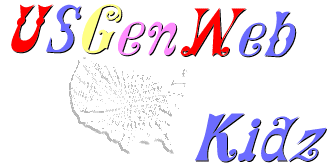Useful Forms

Free Stuff!
Here are some forms you can print out for your own use. Some printers may not print these correctly Please use your back arrow on your browser to return.
Forms to use in your Research
The Pedigree
What are the Pedigree for? Pedigree charts only record information about your direct-line ancestors, that is, from you to your grand parents, to your great-grand parents, and so on. These charts are available usually in four, five or six generation varieties. This is the basic form to show the lines in your family. You can use this to trace all the Surnames that you are researching at a glance.
These charts are a snapshot of your direct ancestry, thy are not designed to record all the known information about your family. Pedigrees are summaries of your family group sheets.
They are the identification of the direct ancestors of one person. The person who is in the line marked #1. ID numbers are helpful to connect to others on other pedigree charts. A man's ID number is always double the ID of his children. All male names are in the upper position of each pair. This makes them all even numbers. All females are odd numbers, with her number being one higher than that of her husband.
Click here to see an example of a Pedigree chart that has been filled out.
Return to TopFamily Group Sheets
You will need one Family Group Sheet for each of your names on your Pedigree Chart. This is the more detailed record of your research. A family group includes parents, children, and the spouse of each of those children. It is the record that you will be using most to keep track of the compiled information on each individual on your Pedigree Chart. If you have read the Basic Genealogy Page you will have already started a scratch Family Group Sheet in your notebook. All you will need to do now is to move the information you gathered onto a copy of one of the Family Group Sheets.
Fill this in as completely as you can for the person you are making each sheet for. This will also include any of your aunts and uncles from both your father's and mother's sides of the family. But you will not give them a # from your Pedigree chart. You can Place the # of each person that is on your Pedigree Chart onto the Group Sheet for easy reference. This will help to organize your search when you are researching.
You will also want to note where you get your information on this page as well. You can place a statement that you got it from a personal interview and the date of the interview. Or you can write the type of document that you got the information from.
- Basic Family Group Sheet 1
- Basic Family Group Sheet 2
- Advanced Family Group Sheet a
- Advanced Family Group Sheet b
Time lines are not a major genealogy tool but they help you to make sure that the information you have on the person is in the correct time frame. So you don't accidentally place a birth date that would make the person born after another important date in their life. Or so you don't have conflicting dates with other information you gather.
You fill these out starting with the persons Birth date and then adding each major date after in chronological order until you get to their death date. This helps to insure that you have a corresponding date with someone else's research, so you can match the dates. This makes matches more accurate and information passed more correct.
This is not one of the forms that you will have to have for your research, but it is a helpful one. So think about using it to help you to keep more accurate records.
Return to TopResearch Log
You will use the research logs to keep a record of every record you search, no matter how insignificant you may feel it is, and regardless if you find what you're looking for. Each entry should be dated so you know when and what was searched for. That way, if you searched a record for only one person's birth date, you know to go back someday and look again. You never know it might contain someone else's information as well. This includes any information you may collect on the internet as well. So don't forget to track all your research. It will save you doing the same thing over.And sometimes you may need to use so-called "negative proof" (effectively a list of all the unsuccessful searches you have done) in order to convince yourself that, because of the absence of evidence to the contrary, some particular supposition should now be taken to be correct.
Record each search on a separate entry. Don't wait until later to enter the information; you may forget important details. Use standard abbreviations (b for born, d for died, m for married, c for circa). Don't use homespun abbreviations. Abbreviations are often confusing when you go back to review your notes. Remember you will be using these to reference when you are organizing your research. They also can lead to inaccurate information.
This is a brief record of what you have found, and when you found it. It is used to help track the information you have located and its sources. you will need one of these for each person you are researching.
A good research log includes the following pieces of information:
- Who are you researching
- Objective of the research
- Where are you conducting the research
- The date of the research
- Documents used in your research and their corresponding numbers if applicable
- A place for comments on your research
Return to Top
Correspondence log
The correspondence log is where you keep track of all the letters and email that you write to others. It is also where you keep track of all the letters you receive from others. You need one of these for each family group sheet that you have as well. You will need to give each piece of correspondence a number. These can have letters of the alphabet prefacing them.
Like this: A-1, A-2, A-3, et.
These need to be on both the correspondence log and the letter or email. So you can use this to reference when you are going back over your letters and responses, this will help to locate them quickly and easily. You can print out a copy of the log on the forms page.
A good correspondence log includes the following pieces of information:
- Date you sent letter
- Date you received letter
- Who you were writing too
- What information the letter was searching for
- The correspondence number
For Fun
Return to TopPlease let me know If you find any problems with the links on this site or if you have an idea for this page. You can email
Stuff for Kids
Q: What was the deadliest battle in American history?
A: The Battle of Antietam While there were at least 4,414 confirmed allied deaths on D-Day, that doesn't compare to the number of lives lost on September 17, 1862, during the Battle of Antietam. Right outside of Sharpsburg, Maryland, the brutal Civil War battle resulted in nearly 23,000 American casualties.
For Teachers
Free resources for teaching history and genealogy


